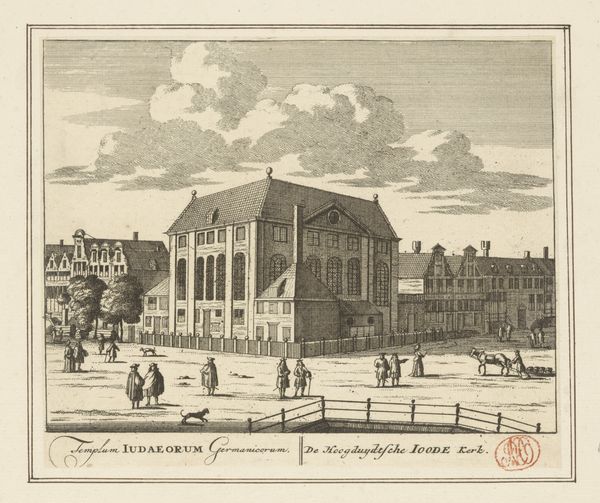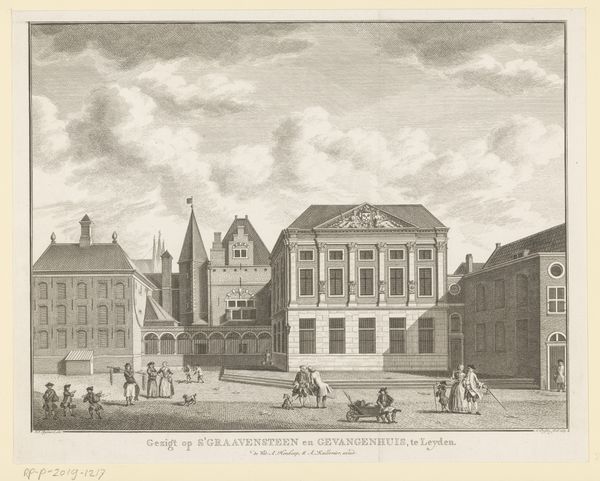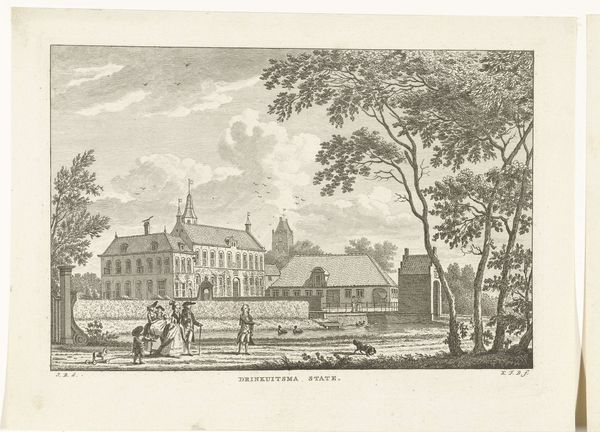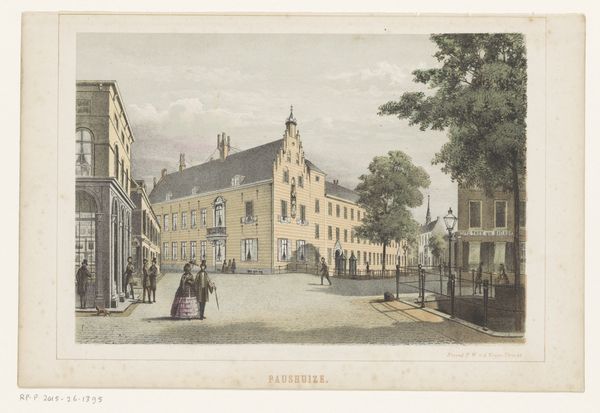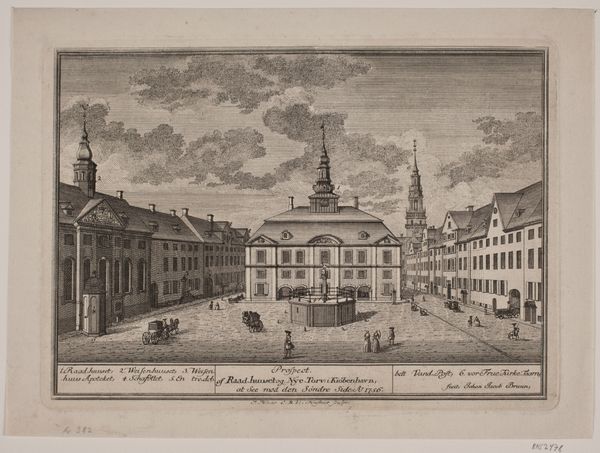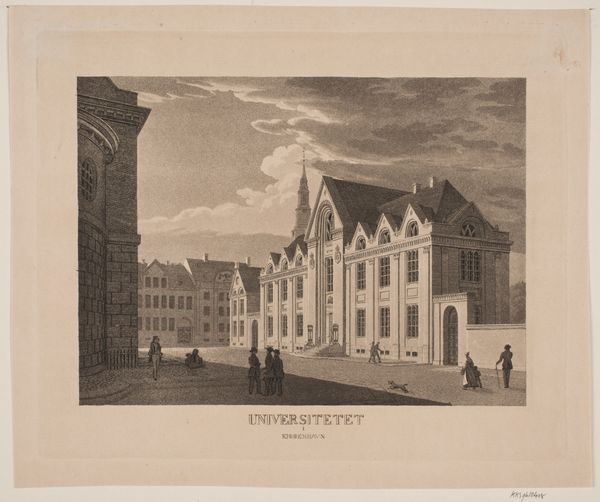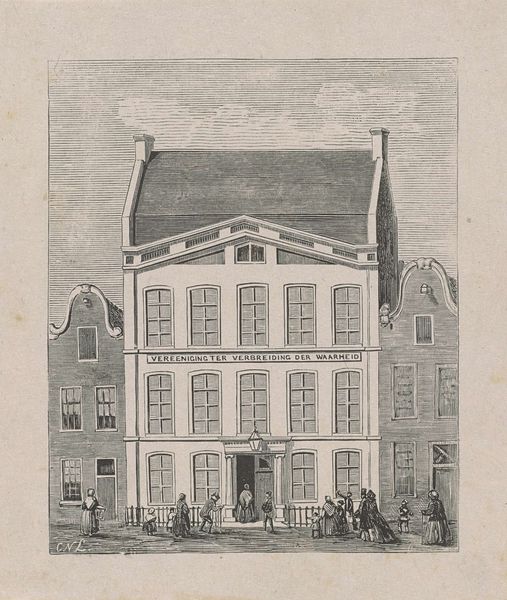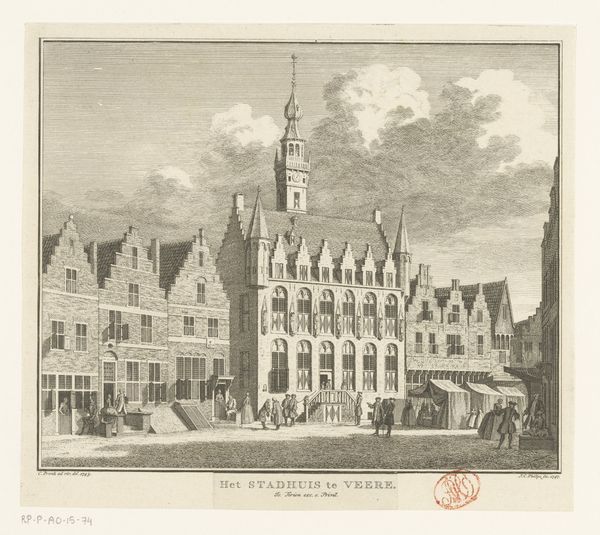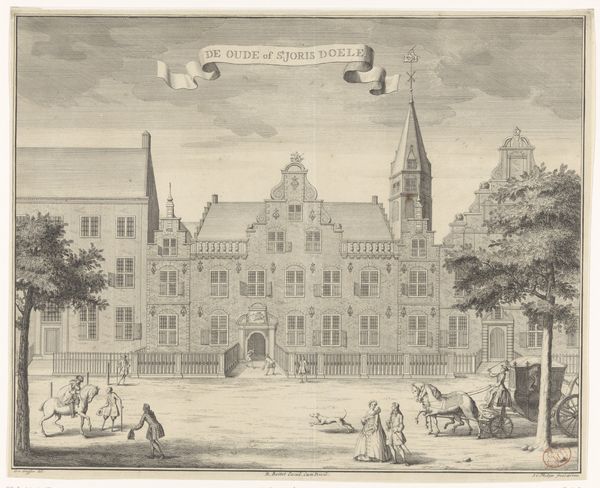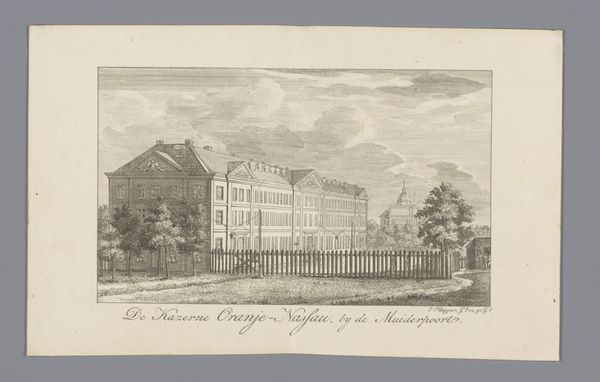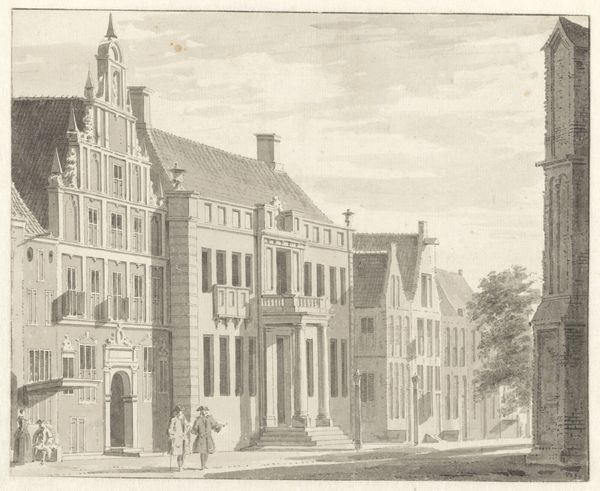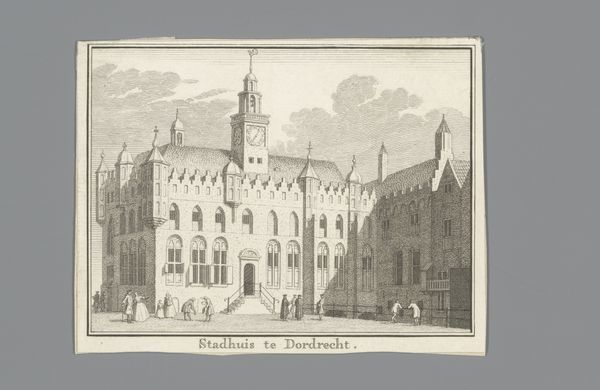
etching, engraving
#
neoclacissism
#
etching
#
cityscape
#
engraving
Dimensions: height 84 mm, width 109 mm
Copyright: Rijks Museum: Open Domain
Curator: Welcome. We're standing before Carel Frederik Bendorp's "Gezicht op het Gravensteen te Leiden," an etching and engraving likely made between 1786 and 1792. It's a cityscape view of the Gravensteen castle in Leiden. Editor: My first thought? It feels…rigid. The lines are so controlled, and the composition is meticulously balanced. Even the clouds seem to obey a certain order. Curator: That orderliness aligns with Neoclassicism, an art movement emphasizing reason and symmetry. The late 18th century was a time of enlightenment ideals, and art often reflected a desire for structure and moral clarity in the face of social upheaval. Editor: You can really see it in the execution—the clean lines of the architecture and the careful details in the stonework. The material process highlights precision above all else. It's fascinating how the very act of etching and engraving reinforces the values of the time. Curator: Absolutely. Notice, too, how the artist carefully positions figures within the scene. They’re not merely there to fill space; they add a sense of scale and human presence to the architecture, emphasizing civic life. This wasn’t just about recording buildings. It was about showing Leiden as a thriving center. Editor: Though those tiny figures also feel…somewhat detached, no? Like props in this carefully staged urban theatre. I wonder how many prints like this Bendorp produced, feeding this image of civic pride to the growing middle class? Curator: Such prints played a significant role in shaping civic identity. They served almost as early forms of propaganda, promoting a sense of community and shared history within Leiden and beyond. Editor: And the labour involved. The skill and time necessary to produce the copper plate for printing, all those individual lines etched one by one, reproduced over and over to reinforce Leiden’s importance as a centre of trade and commerce. Amazing! Curator: Yes, we can read it as both an aesthetic statement and a political tool, reflective of its time. Editor: It's a stark reminder of how much intent can be embedded in a seemingly simple cityscape. Curator: A fitting way to consider how art reflects and shapes its world. Editor: Indeed! Seeing this makes me appreciate just how loaded every material choice and process can be.
Comments
No comments
Be the first to comment and join the conversation on the ultimate creative platform.
